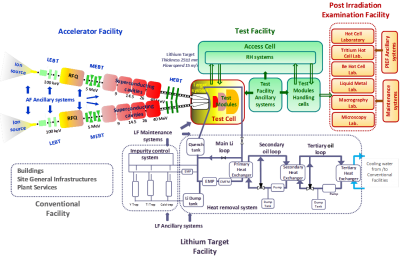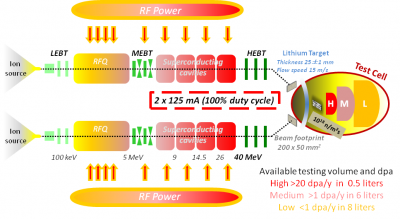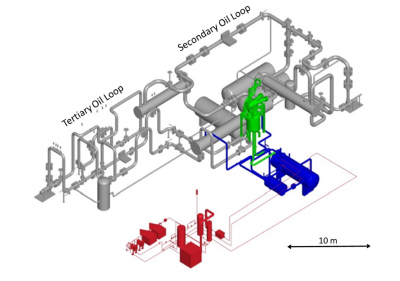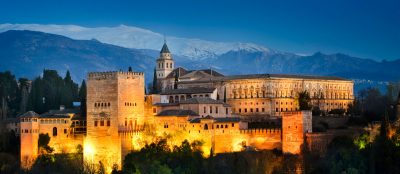
On May 20th, our Fusion Group co-organized, as part of the FusionCAT project that we are coordinating, a webinar on the DEMO Oriented Neutron Source (DONES) project given by Dr Ángel Ibarra, the Director of the Division for Fusion Technologies at Laboratorio Nacional de Fusión, CIEMAT, Madrid (Spain) and the EUROfusion Work Package Early Neutron Source Definition and Design Project Leader.
In his talk, which attracted a total of 113 participants with a variety of backgrounds and profiles from several countries, Ángel discussed the background of the project together with its present status and near-future plans.
A high intensity fusion-like neutron source for the qualification of materials has been identified for a long time as a key step for fusion reactor development, and it forms an important part of the European Research Roadmap to the Realisation of Fusion Energy. The targeted environment needs to be similar to the one in a fusion reactor in order to drive the design and the licensing of the future Demonstration Reactor (DEMO).
At the European level, this need has pushed the development of a neutron source based on the Li(d,nx) stripping reaction called DONES (DEMO Oriented Neutron Source). The mission of DONES is to provide a neutron source that produces high-energy neutrons at sufficient intensity and irradiation volume in order to generate materials irradiation test data for design, licensing, construction, and safe operation of DEMO as well as a data base for benchmarking of radiation responses of materials hand in hand with computational material science.

Future reactors first wall conditions will be simulated by means of two parallel deuteron accelerators. In each of them, a 100 keV deuteron beam will be produced at an electron cyclotron resonance ion source. A first Low-Energy Beam-Transport (LEBT) section is intended to guide the beam to a Radiofrequency Quadrupole (RFQ) system, which will bunch and accelerate the beam to 5 MeV. The output will be injected through a Medium-Energy Beam-Transport (MEBT) and then transferred to a superconducting radiofrequency linear accelerator, where it will reach the final energy of 40 MeV. Finally, the High-Energy Beam-Transport (HEBT) line will guide the beam to the target and shape it to have a cross section of 200mm x 50mm.
The 125 mA deuteron beam will impinge on a liquid helium target 25 mm thick and 260 mm wide, cross-flowing at 15 m/s in front of it. The resulting D-Li reactions will generate a neutron flux of up to 5 x 108 m-2s-1 that will interact with around 1000 small material samples located immediately behind the helium target in a volume of around 0.5 l. This will allow the mechanical characterization of suitable materials and enable understanding the degradation that will lead to the design of constituents tolerant to radiation.

In addition to the accelerator chain, the lithium systems depicted in Fig. 3 are needed to shape and position the lithium target inside the test cell (in green), evacuate the heat deposited in the target and control its temperature at the Target Assembly inlet (in blue and gray), and to carry out the purification of the lithium (in red).

Recently, Granada (Spain) has been chosen as the reference site in case the facility is built in Europe.
The webinar was chaired by Dr. Joan Farnós, the R&D Project Manager and responsible for business development and technology transfer at the Computer Applications for Science and Engineering Department from BSC where our Fusion group belongs.
After the talk, there was some time for questions, which were skillfully moderated by Joan. Among others, we took the opportunity to ask Ángel about the opportunities and technologies required for the DONES construction and development as well about specific needs for numerical modelling of the project.
Sources: webinar slides, ifmif.org and A. Ibarra et al., “The IFMIF-DONES project: preliminary engineering design”, Nuclear Fusion, 2018, vol. 58, no 10, p. 105002.
The webinar is organized under the auspices of the FusionCAT project with reference number 001-P-001722 that has been co-financed by the European Union Regional Development Fund within the framework of the ERDF Operational Program of Catalonia 2014-2020, with the support of Generalitat of Catalonia.

![]()
![]()
